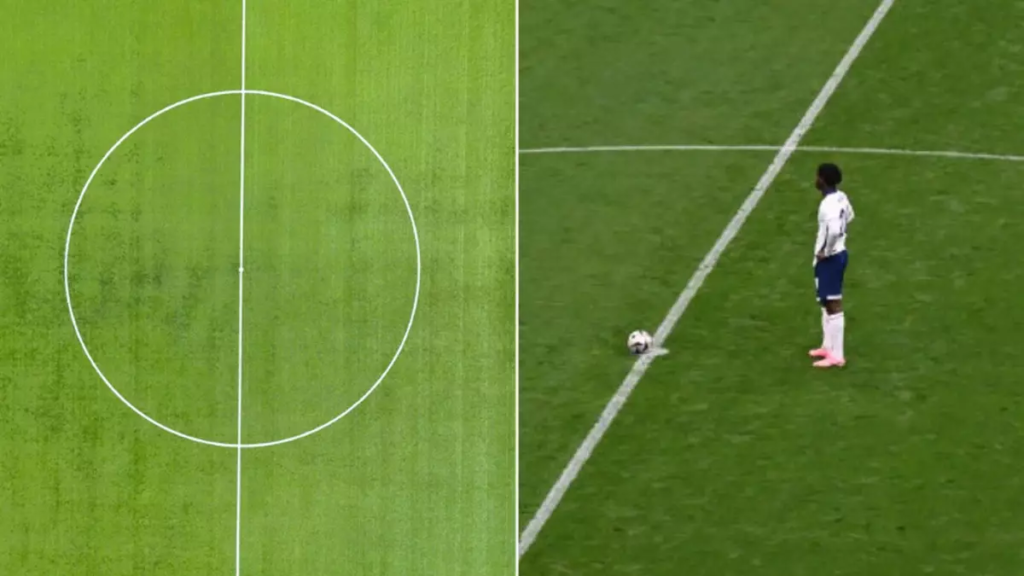Every football match begins with a kick-off in the centre circle, but why is it a circle?
Football fans tend to celebrate their differences, but one thing we all have in common is the fact we think we know better than anyone else.
That includes other fans, pundits, coaches and referees.
But fans don’t know everything. Have you ever thought about why the centre circle is a circle? Maybe you haven’t, but you’re’ about to find out.
As everyone knows, every football match begins with a kick-off at the middle of the centre circle, with the process repeated at the start of the second half and following each goal.
The centre circle doesn’t actually have a purpose in open play, but its shape plays a key role in making sure kick-offs are fair.
That’s because the diameter of the centre circle ensures that opponents are at least 10 yards away from the ball at kick-off, as they are not allowed inside the circle until the ball has been played.
The rule is arguably even more important now that teams no longer have to play backwards straight from kick-off.
According to IFAB’s Law 8.1: “All players, except the player taking the kick-off, must be in their own half of the field of play. The opponents of the team taking the kick-off must be at least 9.15 m (10 yds) from the ball until it is in play.”
The centre circle also plays an important role during penalty shootouts too.
To prevent players from interfering during the shootout, all players on the field, excluding the two goalkeepers and the penalty taker, must stands inside the centre circle until the shootout is completed.
Featured Image Credit: Getty
Topics: Football

